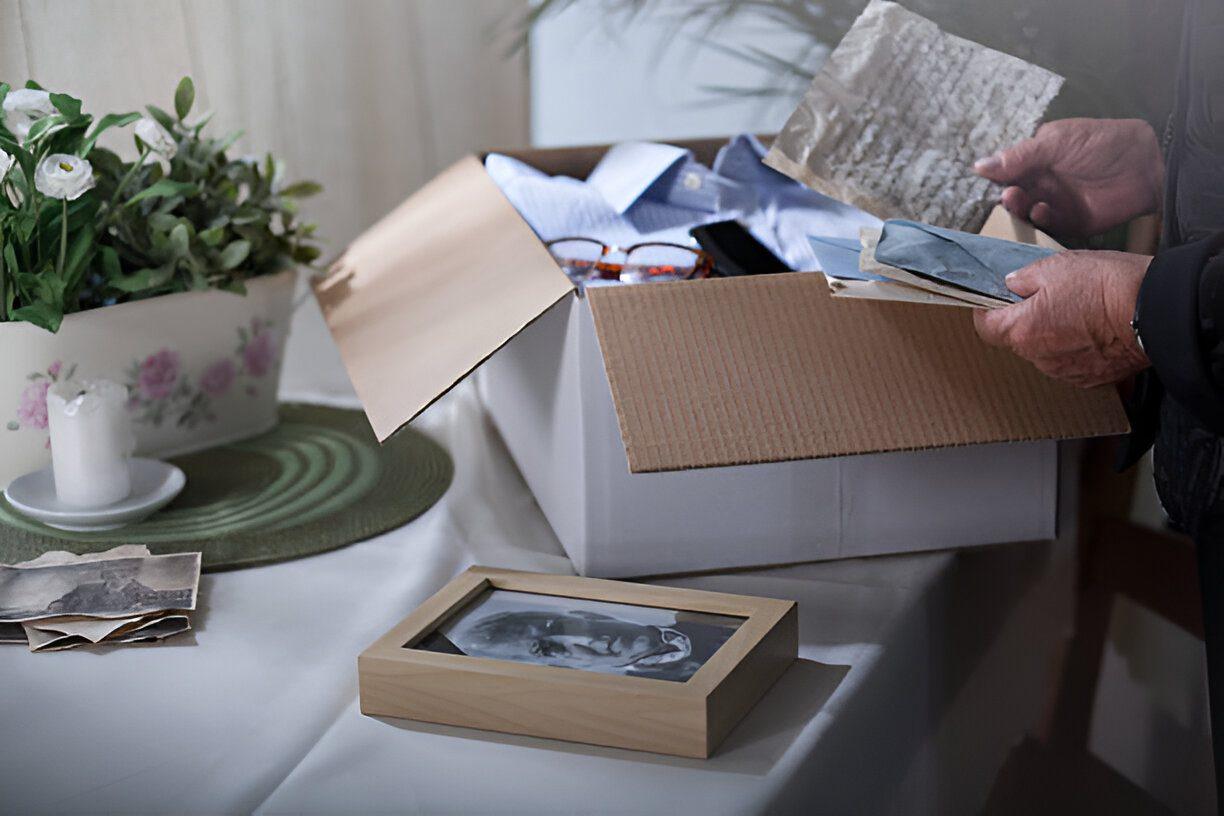When Walls Hold Memories and We Must Say Goodbye
A home is more than walls and a roof—it holds our memories, our sense of security, and the milestones of our lives. Losing a home, whether by choice or circumstance, can feel like losing a part of yourself. This grief, though often misunderstood, is valid and deserves attention. Here’s how to process this loss and find peace in the transition.
“Leaving the home where my kids grew up felt like leaving a piece of my heart behind. Recognizing that our memories traveled with us helped me heal.”
When a Place Becomes Part of Who We Are

More Than Walls—A Reflection of Life’s Story
A home is more than walls and a roof—it holds our memories, our sense of security, and the milestones of our lives. Losing a home, whether by choice or circumstance, can feel like losing a part of yourself. This grief, though often misunderstood, is valid and deserves attention. Here’s a deeper exploration of how to process this loss and find peace in the transition:
Understanding the Emotional Impact
A Symbol of Stability
A home often represents safety and continuity. Losing it can make you feel untethered, questioning your sense of place and belonging.
The Weight of Memories
Homes hold a history—birthdays celebrated, quiet moments shared, and life unfolding in its everyday beauty. Saying goodbye can feel like leaving these memories behind.
Complex Emotions
Feelings of sadness, nostalgia, anger, or even relief (if leaving was tied to stress) are natural. You may cycle through stages of grief as you process this transition.
Memorializing Your Home
Preserve Tangible Memories
Take photographs of meaningful spaces—your favorite reading corner, the view from a window, the garden where you planted flowers. These images will serve as touchstones for your memories.
Save Keepsakes
Carry a piece of your home with you. This could be as simple as a jar of soil from the garden, a small decorative item, or a piece of furniture that holds sentimental value.
Farewell Rituals
Create a ritual to say goodbye. Light a candle in the empty home, walk through each room reflecting on the memories, or write down your favorite moments and keep them in a memory box.
Finding New Roots
Explore Your New Environment
Spend time walking through your neighborhood, learning about local spots, and connecting with neighbors. Familiarity builds attachment and helps you feel part of a community again.
Create New Memories
Host a small gathering or dedicate a space in your new home for a meaningful activity. Filling the new space with joy and laughter helps it feel less foreign.
Embracing Change
Lessons From the Past
Reflect on what your home taught you—whether it’s the value of shared meals, the beauty of personal space, or the importance of a cozy corner. Carry these lessons into your new chapter.
Adaptability as Growth
Recognize that change, while uncomfortable, often brings opportunities. Your new environment might offer unexpected joys, new friends, or the chance to redefine your idea of “home.”
Acknowledging Your Grief
Honor Your Emotions
Allow yourself to feel whatever arises—whether it’s sadness, frustration, or even guilt about feeling so deeply connected to a place. Recognizing these emotions is the first step toward healing.
Talk About It
Share your memories and feelings with trusted friends or family. Acknowledging the loss out loud validates your grief and invites support.
Express Creatively
Write a goodbye letter to your home, create art inspired by its memories, or record a photo journal. These acts of expression can bring closure and comfort.
Adjusting to the Transition
Personalize Your New Space
Even small changes—like painting a wall a familiar color or arranging furniture in a similar layout—can make a new house feel like home. Add personal touches that reflect your identity and bring you comfort.
Carry Traditions Forward
Bring elements of your old routines into your new home. Whether it’s a weekly family dinner or a quiet moment with a cup of tea in the morning, these rituals can ground you in familiarity.
Seeking Support
Lean on Community
Talk to people who have experienced similar transitions. Online forums or support groups focused on moving, downsizing, or home loss can be invaluable spaces for understanding and empathy.
Therapeutic Support
If the grief feels overwhelming, a counselor can help you process your emotions, especially if the loss of your home coincides with other life challenges like divorce or financial strain.
“The walls may change, but the memories and the love that built them always travel with you.” — Hayley M.
Honoring the Life Cycle of Homes
Homes Are Chapters
Just as we grow and change, so do the spaces we live in. Each home becomes a chapter in your story, shaping who you are and reflecting your life during that time.
Memories Travel With You
Remember, the love and experiences you had in your home don’t stay within its walls—they live on in you, shaping your identity and the way you build future spaces.
Practical Steps for Closure
Organizing the Move
Breaking the moving process into small steps—packing one room at a time, labeling boxes with care—can make it less overwhelming.
Decluttering With Intention
While sorting through belongings, consider what carries meaning and what you can let go. Let this process be a chance to reflect on what truly matters to you.
Financial Planning
If the move was tied to financial hardship, create a budget or work with a financial advisor to stabilize your situation. Having a plan can reduce anxiety.
Things To Try This Week!
- Create a Farewell Ritual: Before leaving your home, light a candle in each room as you reminisce on special moments. Blow it out as a symbol of gratitude and closure.
- New Home Journaling: Keep a small notebook to jot down your feelings each day in your new place. Document small victories—like finding a favorite reading spot or a pleasant neighborly greeting.
- Shared Memories Gathering: Invite friends or family to share their favorite memories of your old home. Compile their stories into a little scrapbook or digital album to carry with you.
Conclusion
Grieving the loss of a familiar home is a deeply personal process, marked by mourning what was while opening yourself to what can be. It’s about cherishing the memories within those walls and carrying their essence with you, even as you adapt to a new space.
Home is not just a structure—it’s the love, growth, and experiences it holds. By honoring your grief and finding ways to infuse your new environment with meaning, you can build a future where the concept of “home” is not lost but evolves. Trust that healing takes time, and each step forward is a testament to the strength and adaptability you carry within.
Though your home’s walls may no longer hold your daily life, the essence of what you built there remains etched in your heart.
It’s through these memories, rituals, and the willingness to adapt that you find strength in the transition. As you seek comfort and renewed grounding, explore our cherish collections—gentle resources and heartfelt ideas designed to honor the past while guiding you toward a hopeful future in the spaces you’ll come to call home next.
Carrying Home’s Warmth Wherever You Go
When the house that once sheltered your memories shifts into the past, the love within its walls travels with you. Our All Things Cherish collection supports this journey, offering comforting reflections, keepsakes, and gentle reminders that a home’s spirit can remain in your heart, guiding you to create fresh memories in new surroundings.
More Reflections, More Growth
Loss is complex, and the road to healing is different for everyone. These reflections offer insight, support, and guidance as you navigate this journey.
Becoming You Again: Grieving and Embracing the Self That’s Changed
Grieving the loss of your former self is deeply personal, reflecting the shifts in identity brought by change. Learn strategies to honor your past while embracing your evolving self.
When Trust Slips Away: Navigating the Grief of Broken Faith
The loss of trust is a profound grief, altering your view of relationships and the world. This guide explores the emotional impact, the grieving process, and pathways to healing and growth.
When the Bond Breaks: Rebuilding Trust After Betrayal
Rebuilding trust after betrayal requires commitment, transparency, and mutual effort. This guide explores practical steps for both the betrayed and the betrayer to heal, grow, and reconnect.
Daring to Dream Again: Rebuilding Hope After Loss
Building new dreams after loss is a journey of courage and growth. Explore how to honor the past while creating aspirations that reflect your evolving self and potential.
When Hopes Fall Short: Coping with Lost Dreams and Aspirations
The grief of lost dreams runs deep, touching our identity and purpose. Explore how to process this loss, find resilience, and embrace new opportunities for growth.
Letting Go of What Might Have Been: Grieving a Lost Future
Grieving an imagined future is a silent, often unspoken sorrow. This guide explores how to navigate the loss of unfulfilled dreams, embrace resilience, and forge new possibilities.
When Loss Shapes Who We Are: Embracing an Identity Tied to Grief
Loss often becomes a defining thread in the fabric of our identity. This article explores how grief shapes who we are, offering pathways to integrate loss, foster growth, and embrace resilience.
Becoming Beyond Loss: Grieving the Person You Used to Be
Grieving the loss of who you were is a deeply human experience. Explore how to honor your past self, embrace transformation, and create a fulfilling new identity in the wake of life changes.
Explore Journeys of Healing and Solace:
Discover dedicated spaces that offer understanding, guidance, and connection through grief. From the loss of loved ones to life’s challenging transitions, each category provides a pathway to reflect, connect, and find peace in shared experiences.

























